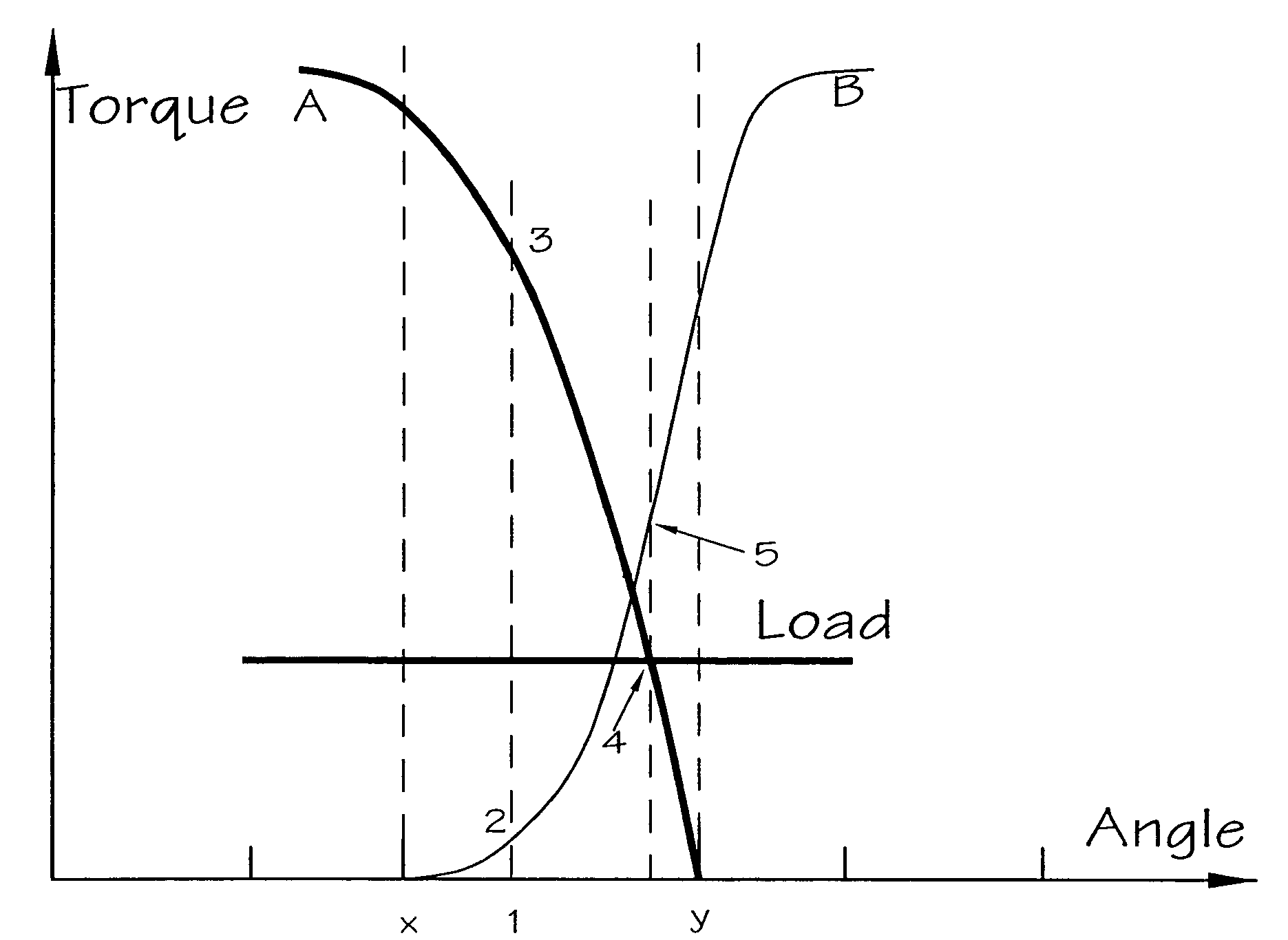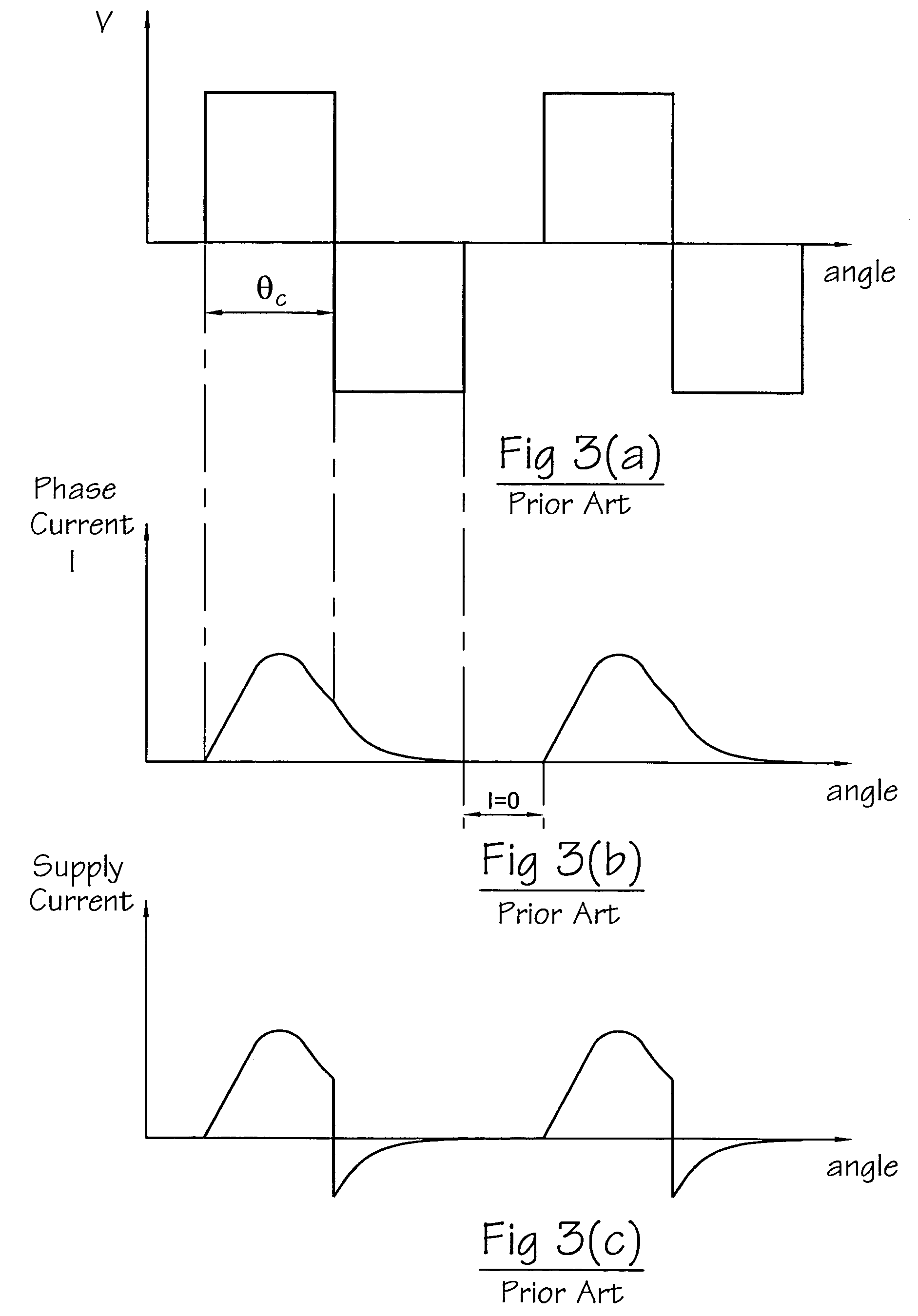Excitation of switched reluctance motors
a technology of switched reluctance and motor, applied in the direction of motor control for motor oscillation damping, synchronous motor starter, starter arrangement, etc., can solve the problems of increasing the burden on the supply, unsuitable single-pulse mode, and being too expensive for the majority of applications
- Summary
- Abstract
- Description
- Claims
- Application Information
AI Technical Summary
Benefits of technology
Problems solved by technology
Method used
Image
Examples
Embodiment Construction
[0040]Embodiments of the invention are implemented in this embodiment in a drive system such as that shown in FIG. 1. Switching circuits for each of the phases as shown in FIG. 2 optionally are used, but it is not necessary for the switching circuit to have freewheeling capability. According to embodiments of the invention to be described, the control strategy is adapted to exploit the capabilities of the chosen switching circuit by programming of the controller 14.
[0041]A typical RPT for the 3-phase drive of FIG. 1 is shown schematically in FIG. 5. The three sensors are shown with 120° mechanical offset, but can have any offset which equals 120° electrical. The schematic shown has teeth with a mark:space ratio of unity. In practice, this may be varied slightly to accommodate any non-ideal characteristics of the sensors, e.g. beam width in an optical sensor or fringing in a Hall-effect sensor, so that the final signal from the RPT is at or acceptably near unity mark:space. The outpu...
PUM
 Login to View More
Login to View More Abstract
Description
Claims
Application Information
 Login to View More
Login to View More - R&D
- Intellectual Property
- Life Sciences
- Materials
- Tech Scout
- Unparalleled Data Quality
- Higher Quality Content
- 60% Fewer Hallucinations
Browse by: Latest US Patents, China's latest patents, Technical Efficacy Thesaurus, Application Domain, Technology Topic, Popular Technical Reports.
© 2025 PatSnap. All rights reserved.Legal|Privacy policy|Modern Slavery Act Transparency Statement|Sitemap|About US| Contact US: help@patsnap.com



